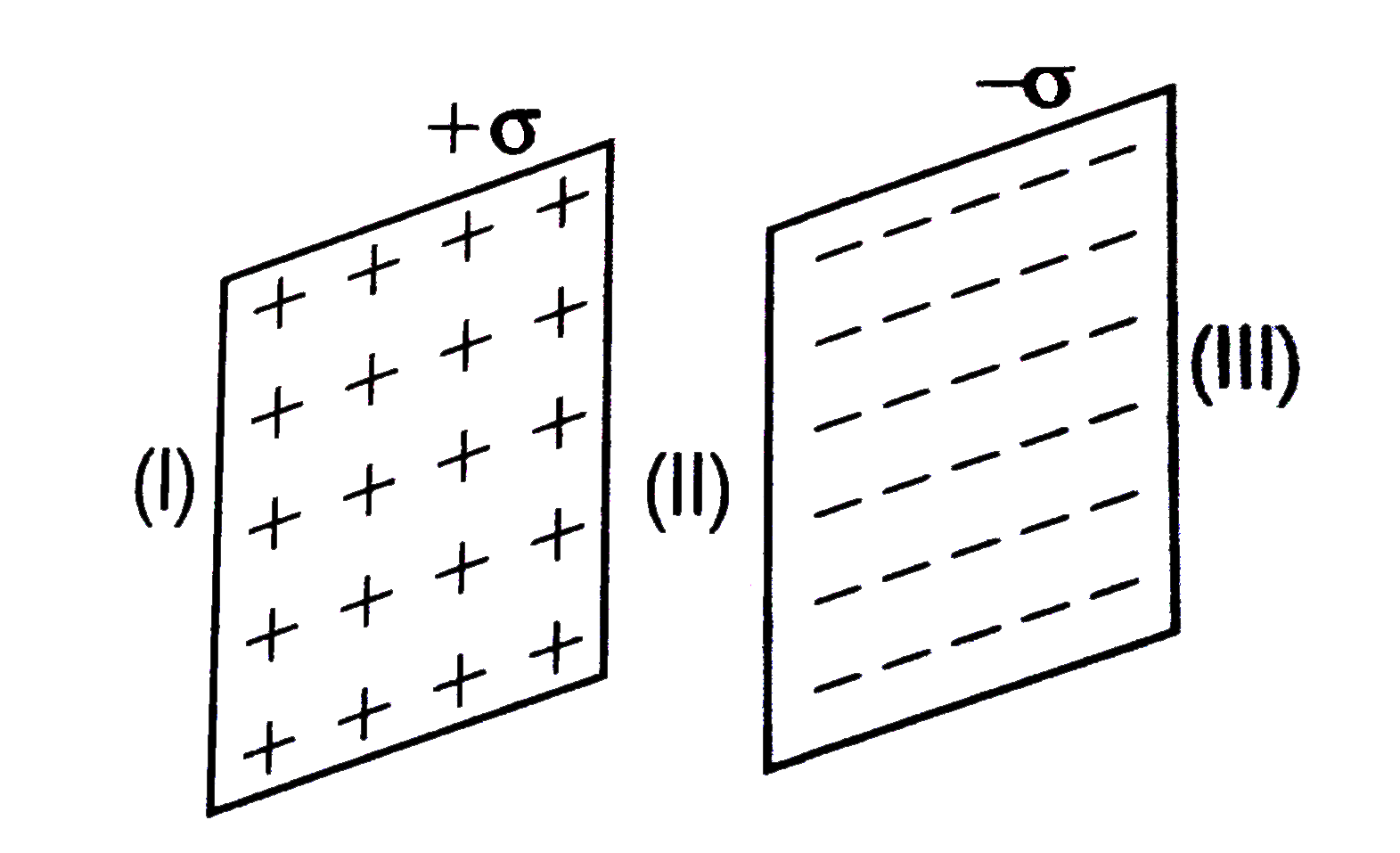Four large charged conducting sheets kept parallel to each other. Find the charge on each of the eight faces and electric field in region I,II,III IV as shown in the figures below.
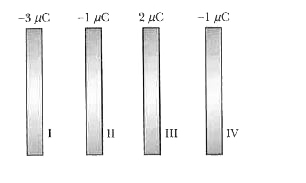
Et=σε0=−3×10−62Aε0,En=σε0=−5×10−62Aε0
Em=−1×10−62Aε0,Eiv=−3×10−62Aε0
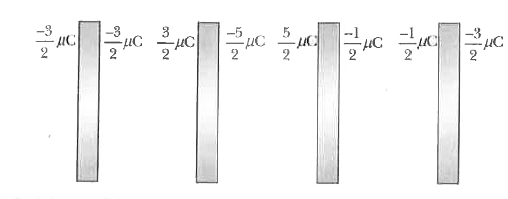
Topper's Solved these Questions
- GAUSS' LAW BOOK - RESNICK AND HALLIDAYCHAPTER - GAUSS' LAW EXERCISE - PROBLEMS
42 Videos
- GAUSS' LAW BOOK - RESNICK AND HALLIDAYCHAPTER - GAUSS' LAW EXERCISE - PRACTICE QUESTIONS (SINGLE CORRECT CHOICE TYPE)
20 Videos
- GAUSS' LAW BOOK - RESNICK AND HALLIDAYCHAPTER - GAUSS' LAW EXERCISE - PRACTICE QUESTIONS (INTEGER TYPE)
3 Videos
- FORCE AND MOTION-IIBOOK - RESNICK AND HALLIDAYCHAPTER - FORCE AND MOTION-IIEXERCISE - PRACTICE QUESTIONS (Integer Type)
1 Videos
- GEOMETRICAL OPTICS : REFLECTION BOOK - RESNICK AND HALLIDAYCHAPTER - GEOMETRICAL OPTICS : REFLECTION EXERCISE - PRACTICE QUESTIONS (Integer Type)
3 Videos
Similar Questions
Knowledge Check
Find the electric field in region II as shown in figure.
 AzeroBσ4πε0Cσε0DInfinite
AzeroBσ4πε0Cσε0DInfiniteX and Y are large, parallel conducting plates close to each other. Each face has an area A. X is given a charge Q. Y is without any charge. Points A,B and C are as shown in the figure.
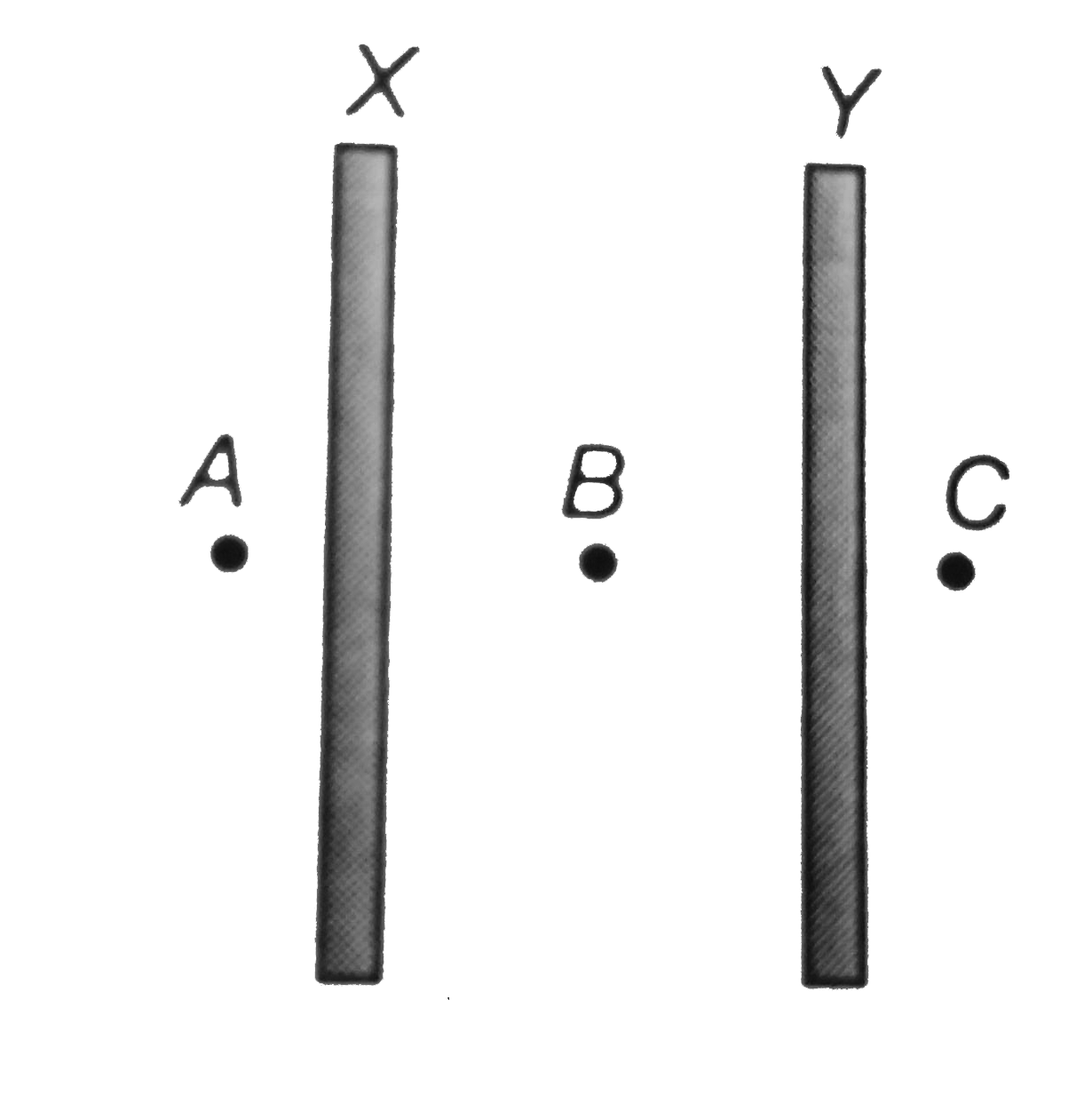 AThe field at B is Q2εABThe field at B is Qε0ACThe fiels at A,B and C are of the same magnitudeDThe fieds at A and C are of the same magnitude, but in opposite directions
AThe field at B is Q2εABThe field at B is Qε0ACThe fiels at A,B and C are of the same magnitudeDThe fieds at A and C are of the same magnitude, but in opposite directionsThree infinitely charged sheets are kept parallel to xy plane having charge densities as shown in Fig. Then the value of electric field at P is
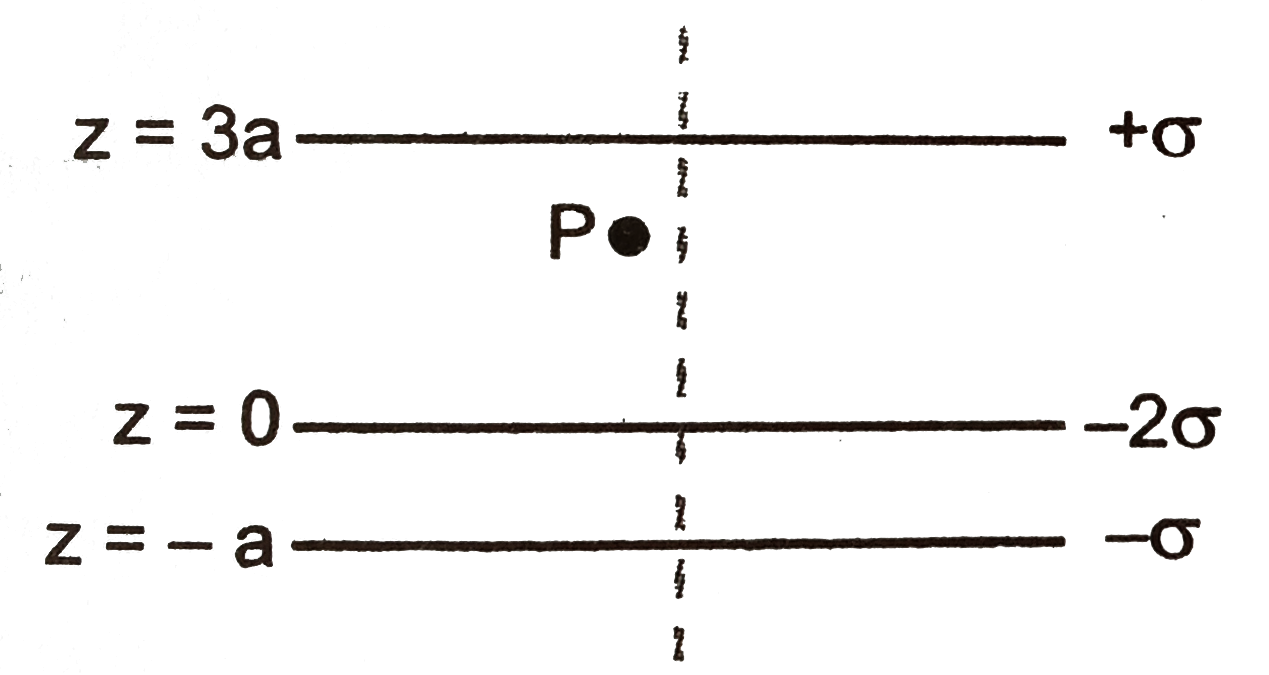 A−4σ∈0ˆkB4σ∈0ˆkC−2σ∈0ˆkD2σ∈0ˆk
A−4σ∈0ˆkB4σ∈0ˆkC−2σ∈0ˆkD2σ∈0ˆk
Three large conducting sheets placed parallel to each other at a finite distance contain charges Q,−2Q,and3Q, respectively. Find the electric fields at points A, B, C, and D.
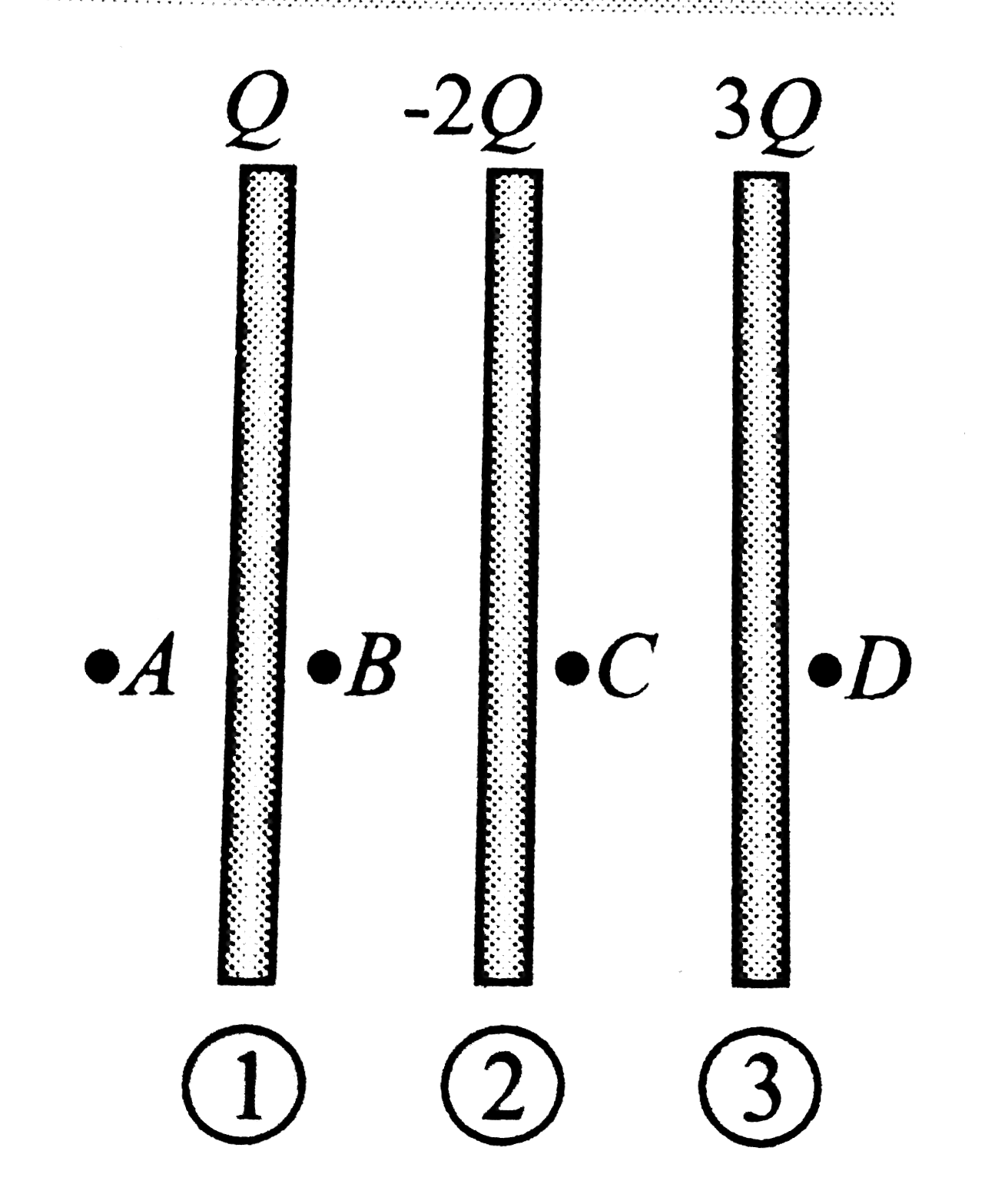
View SolutionX and Y are large, parallel conducting plates close to each other. Each face has an area A. X is given a charge Q. Y is without any charge. Points A,B and C are as shown in the figure.

View SolutionSome isolated metal plates with large surface areas are kept parallel to each other and total charges on each plate are as shown. Find the charge appearing on the surfaces of plates.
(a)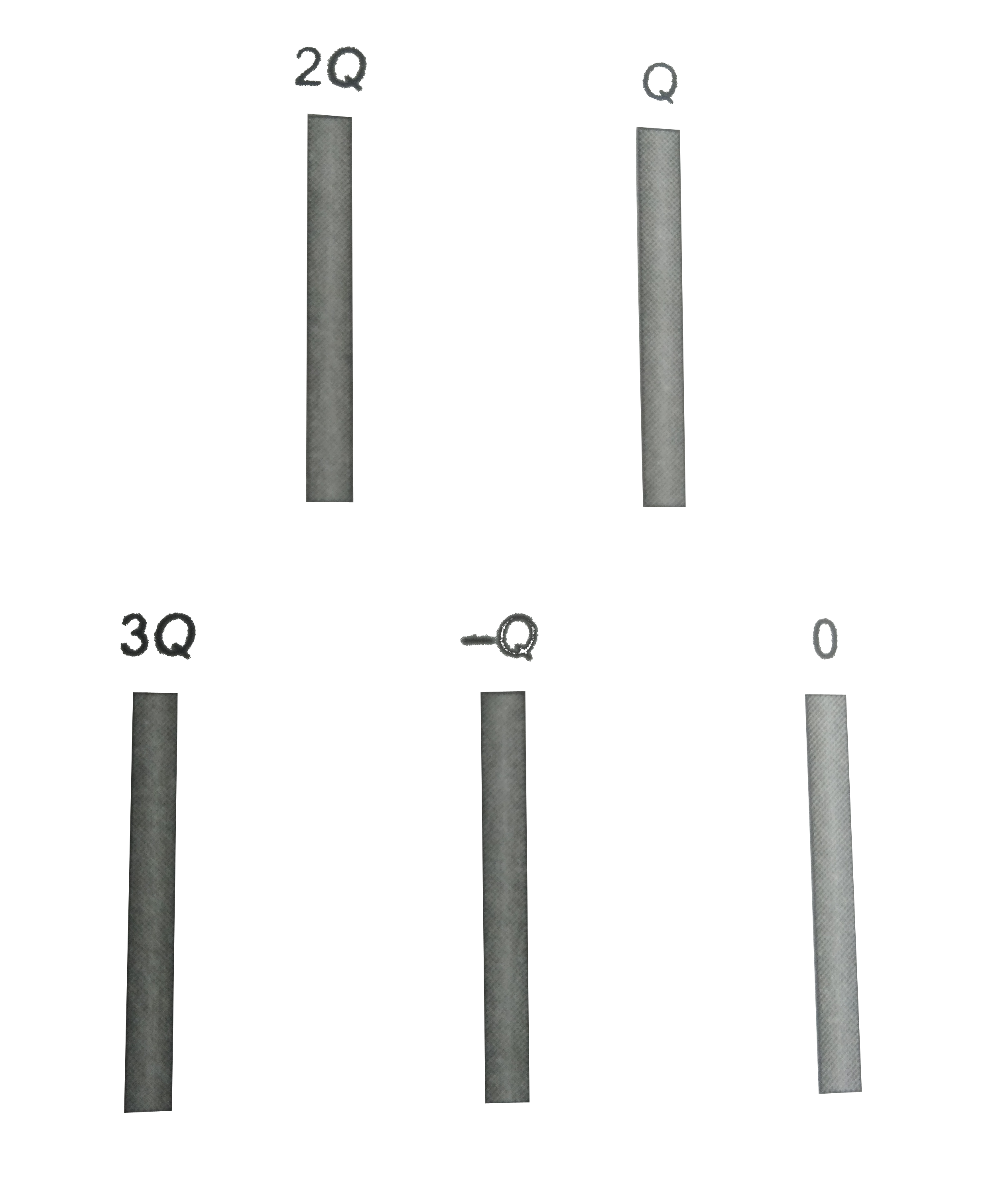
View SolutionTwo large conducting plates are placed parallel to each other nad they carry equal and opposite charges with surface density σ as shown in figure (30-E6). Find the electric field (a) at the left of the plates, (b) in between the plates and © at the right of the plates.
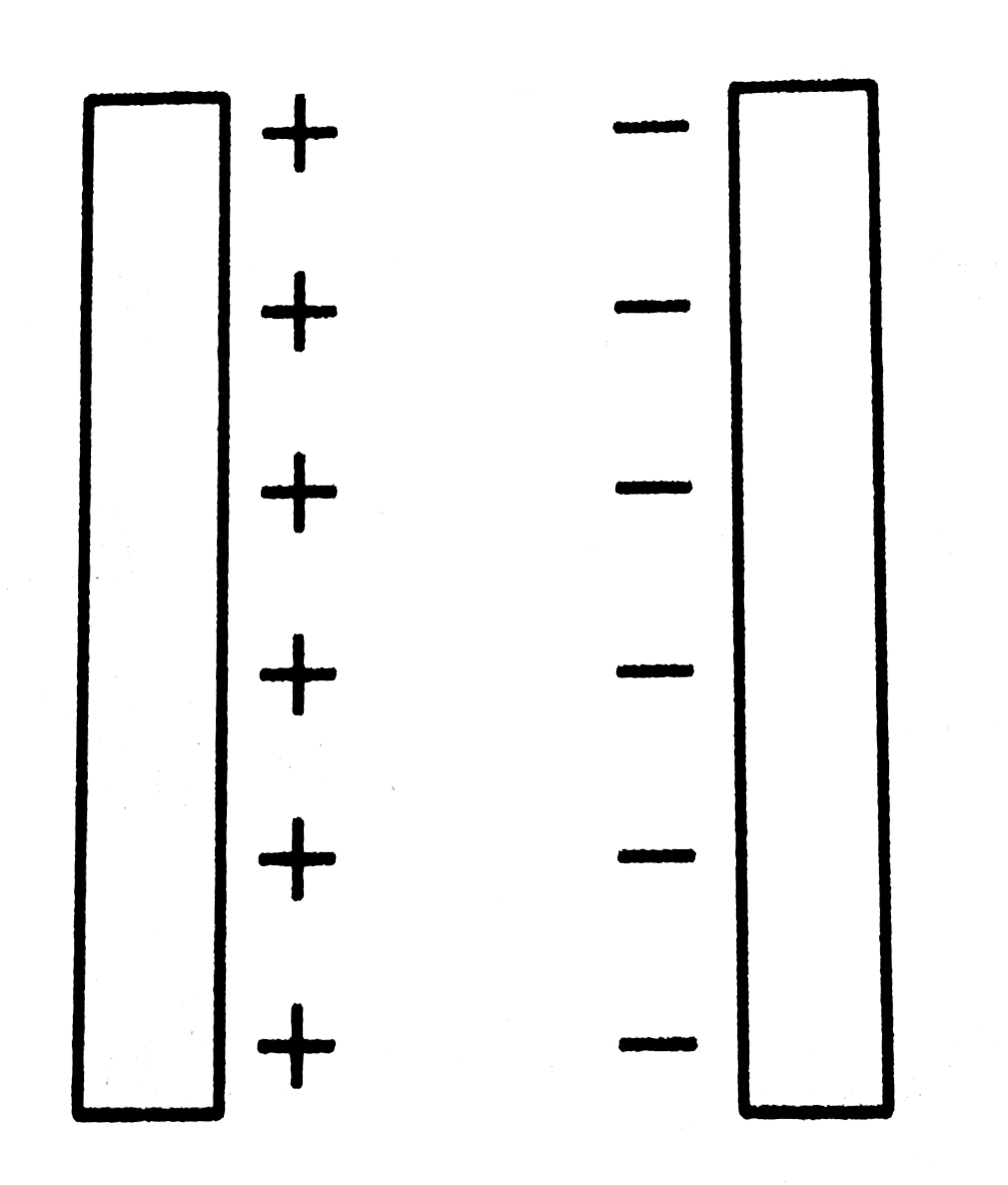
View SolutionTwo large conducting plates are placed parallel to each other nad they carry equal and opposite charges with surface density σ as shown in figure (30-E6). Find the electric field (a) at the left of the plates, (b) in between the plates and © at the right of the plates.

View Solution

